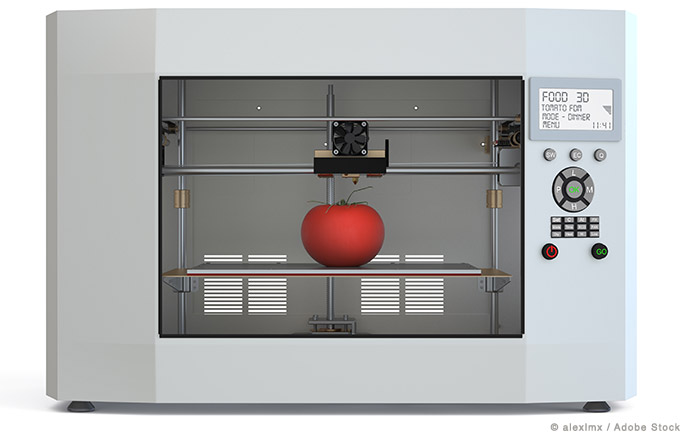
All of us have had one of those days, sitting at home, where we wished we had the food-printing technology from Star Trek. All we’d have to do is give a voice command to our wall unit, and a few minutes later the exact dish we wanted would be ready for us, steaming hot and delicious. No cooking involved, and no lengthy preparation process. Just push the button, wait a little white, and then bam, exactly what you ordered.
Well, while transporter technology is likely to remain out of our grip for some time, 3D-printed food is already here. And according to Digg, it has the potential to change the way we think about our food.
3D-printed food comes with a lot of benefits. For one thing, it means that we can tailor our food precisely to our nutritional needs. Food can be prepared quickly, and uniformly. But, perhaps most importantly, 3D-printed food may have a serious impact on food waste.
This process takes the guesswork out of cooking. If you want a single meal, you can print one exactly to your standards. Because the cooking is being done by a machine, there’s less risk of a mistake, which would lead to wasted materials. The basic components can be easily stored and preserved, which means there will be fewer instances of fridge emptying when you realize your sandwich fixings have all gone bad.
Will 3D-printing completely eliminate food waste? Not likely. However, if it is adopted on a large-scale, it could reduce the amount of food we waste, while simultaneously getting is tailor-made plates that look, taste, and have the exact nutrition we need on an individual basis.




































































































































 Three Ways to Engage Teams and Clients to Maximize Your Recycling Program Engagement
Three Ways to Engage Teams and Clients to Maximize Your Recycling Program Engagement  How to Integrate Accessibility Into Your Sustainability Planning
How to Integrate Accessibility Into Your Sustainability Planning  Why Park Benches Can Promote Workplace Well-Being
Why Park Benches Can Promote Workplace Well-Being 
